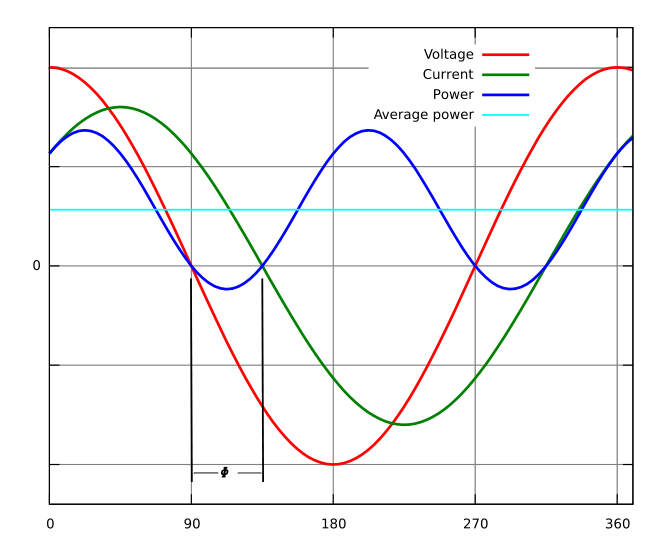Maybe you are one of those who never completely understood the principle of power factor. Well, now that I recently learned it at school, I can explain it!
What is power factor? To explain what is exactly the power factor, we must first know three basic terms,
real power, apparent power and reactive power.
The real power is measured in Watts. You work with watts all the time. It's the part of the electrical power that does the job.
Apparent power is measured in VoltAmps (VA) and represents the whole power consumption. In the diagram that follows, it's P(max), or peak power X 0.707. Don't confuse it with the
average power in the diagram! The average power is P(max) X 0.636. We won't need average power in this article LOL.
Reactive power is measured in Reactive VoltAmps (VAr) and represents the part of apparent power that isn't really used, but is still consumed in the electrical circuit. That may sound weird, "How can power not be used, but still consumed?". You'll see it in just a minute

Let's figure everything out in this diagram of a sine wave AC current:

The real power is:
Volts(eff) X Amps(eff)
Each of the efficient values can be calculated by multiplying their peak value by 0.707.
As long as there are not any inductive or capacitive load involved (only resistive loads), this principle applies. If there's an inductive (i.e. ballast) or capacitive (i.e. a cheap fluorescent night light with capacitive ballast) load, a phenomenon will occur, the
phase angle of current or voltage won't equal 0 degrees anymore!
Let's see the diagram again:

This diagram represents what a purely resistive charge would consume. The current (in green) and voltage (in red) sine waves both get to their peak
at the same time .
Now, when power is applied to an inductor, the latter will create a 90 degrees phase angle, the voltage will
lead the current. Because an inductor opposes the changes of current, it lags the latter. In my sine wave diagram it would give this:

See the current sine wave? It cycles at the same frequency, but goes to zero LATER than the voltage. Look at 360 degrees (at the very right), at the peak of the voltage sine wave. You'll notice the current sine wave isn't at its maximum value. So, for a maximum voltage, you don't have the full current, which gives you a lower
real power, but still draws as much current over a complete AC cycle!
This, my friends, is the effect of a low power factor!

To make the phenomenon even more obvious, let's push it to the furthest and create a 90 degrees phase angle!

In this diagram, no real power is consumed. Yup, no power! Can you find out by yourself why? If so, don't read any further!

Just continue when you find!
[...]
Correction time! XD If you found that the value of the current sine wave was 0 at the voltage peak, you are correct! Because any Volts X 0 Amps always gives 0 Watt.
But ... how about capacitors?Capacitors will create the same phenomenon, except for one thing, it leads the
current , and not the voltage! That is exactly why ballasts are combined with a capacitor to correct the power factor. Like (-) (-) = (+), the capacitor cancels the effect of the ballast on power factor, by LEADING BACK the current.
***
Voila! That's it! I hope you now fully understand the principle of power factor. If you don't, feel free to contact me, by PM here, or via email. Just go on my profile page
here , you have everything needed to contact me. I'll gladly give you further explanations.